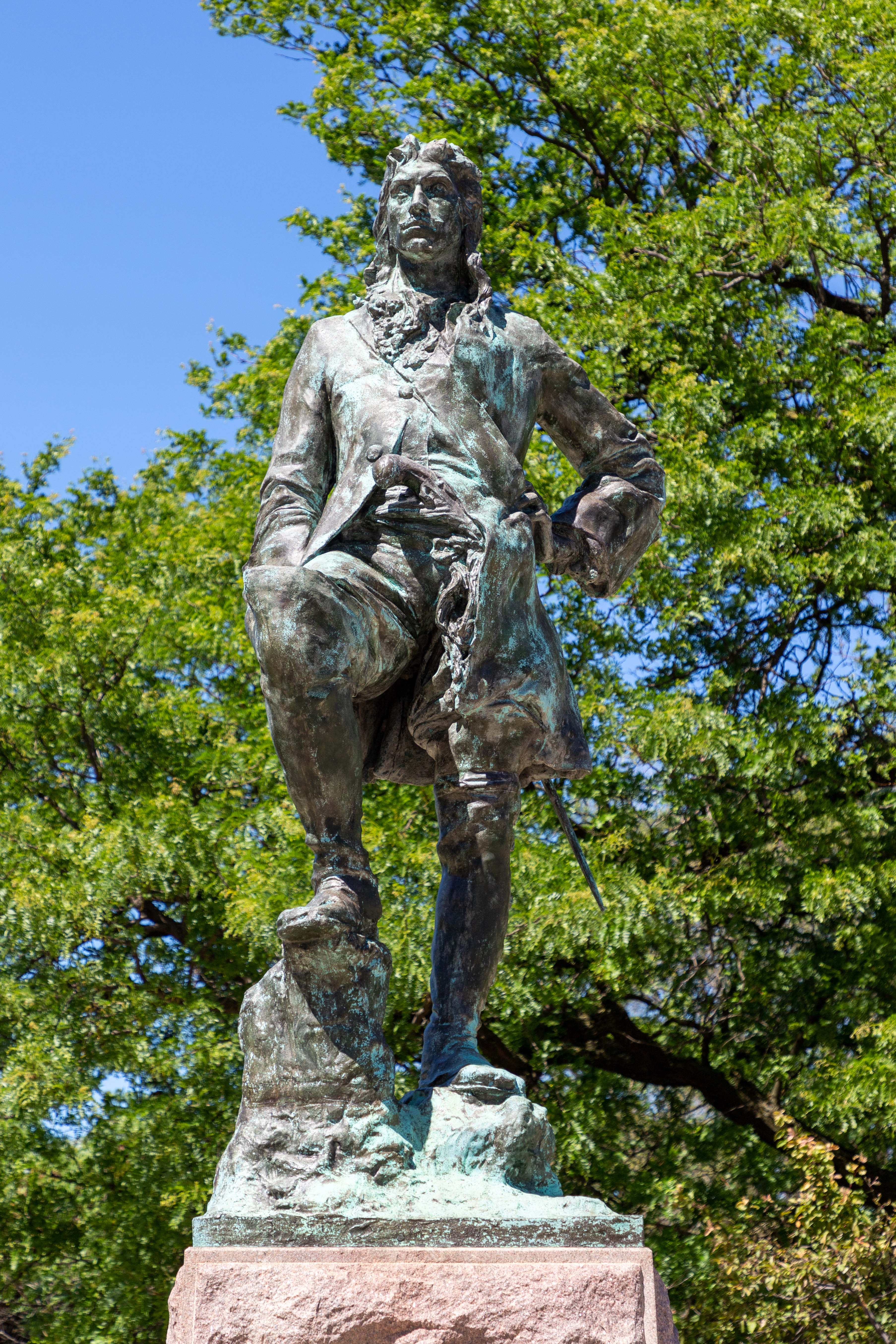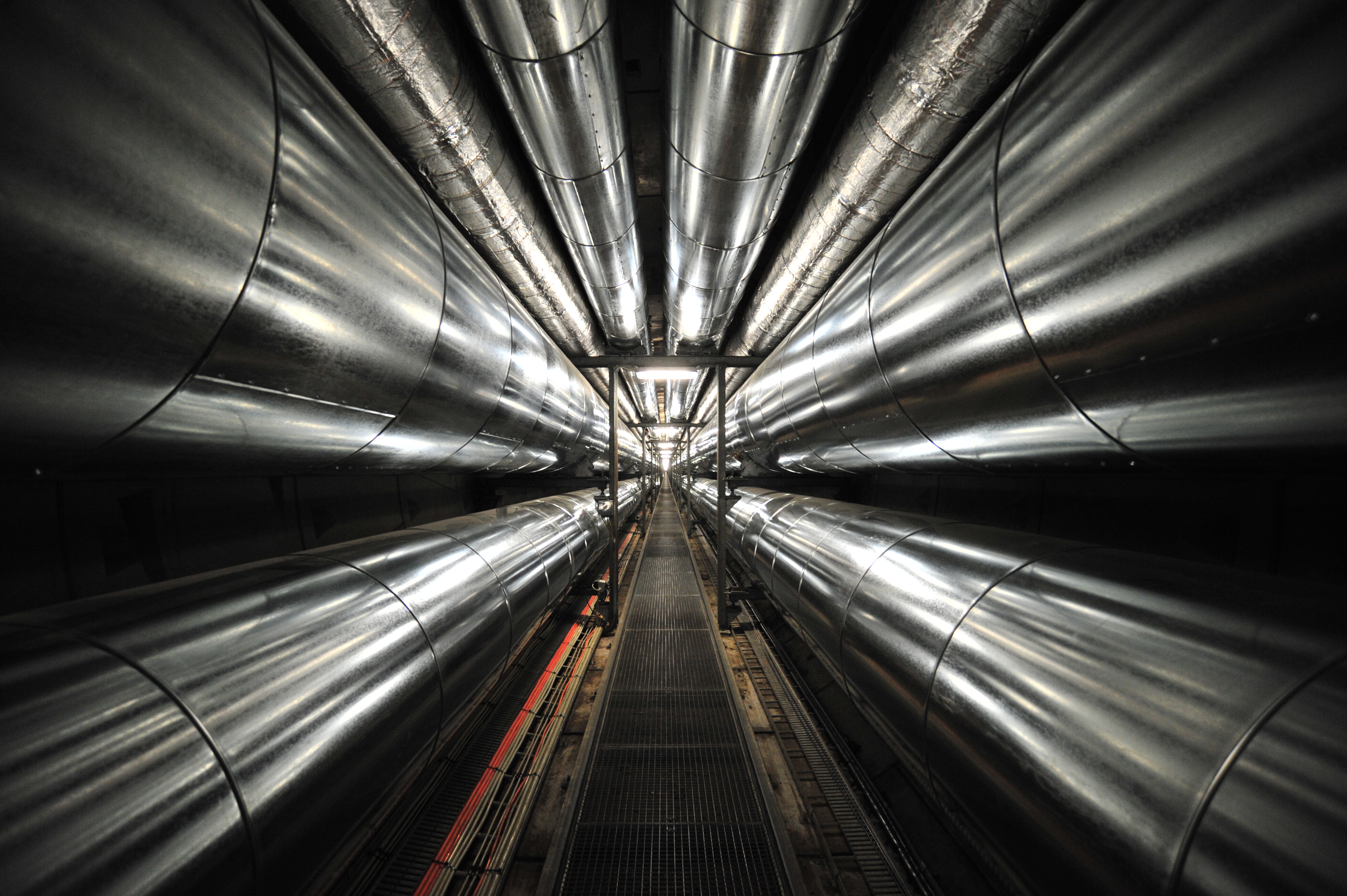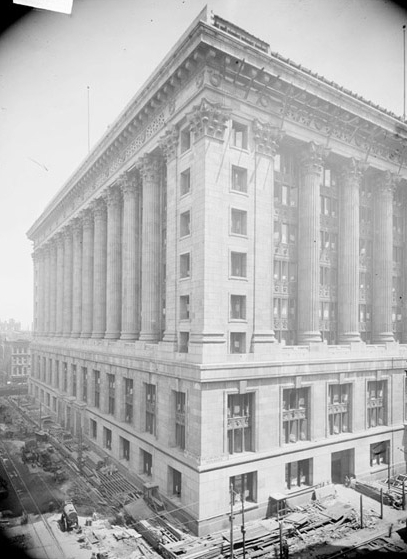|
LaSalle Street
LaSalle Street is a major north-south street in Chicago named for René-Robert Cavelier, Sieur de La Salle, a 17th century French explorer of the Illinois Country. The portion that runs through the Chicago Loop is considered to be Chicago's financial district. Route description South Side South of the Financial District, LaSalle Street gets cut off for a while by the Amtrak/Metra Rail yard from Taylor St to 1600 South. It runs parallel to the Rock Island District Metra line. South of 26th Street, it serves as a frontage road for the Dan Ryan Expressway until 47th street, where it merges with Wentworth Avenue. South of 47th, it starts and stops as a local street until it finally terminates at Sibley Boulevard in Dolton, Illinois, Dolton. In the Loop The stretch of LaSalle Street and its adjacent buildings in the Loop is recognized as the West Loop–LaSalle Street Historic District. The south end of LaSalle Street terminates at the art-deco Chicago Board of Trade Buildin ... [...More Info...] [...Related Items...] OR: [Wikipedia] [Google] [Baidu] |
Chicago Board Of Trade Building
The Chicago Board of Trade Building is a 44-story, Art Deco skyscraper located in the Chicago Loop, standing at the foot of the LaSalle Street canyon. Built in 1930 for the Chicago Board of Trade (CBOT), it has served as the primary trading venue of the CBOT and later the CME Group, formed in 2007 by the merger of the CBOT and the Chicago Mercantile Exchange. In 2012, the CME Group sold the CBOT Building to a consortium of real estate investors, including GlenStar Properties LLC and USAA Real Estate Company. The CBOT has been located at the site since 1885. A building designed by William W. Boyington stood at the location , being the tallest building in Chicago from its construction until its clock tower was removed in 1895. The Boyington building became unsound in the 1920s and was demolished in 1929, replaced by the current building designed by Holabird & Root. The current building was itself Chicago's tallest until 1965, when it was surpassed by the Richar ... [...More Info...] [...Related Items...] OR: [Wikipedia] [Google] [Baidu] |
LaSalle Street Station
LaSalle Street Station is a commuter rail terminal at 414 South LaSalle Street in downtown Chicago. First used as a rail terminal in 1852, it was a major intercity rail terminal for the New York Central Railroad until 1968, and for the Chicago, Rock Island and Pacific Railroad until 1978, but now serves only Metra's Rock Island District. The present structure became the fifth station on the site when its predecessor was demolished in 1981 and replaced by the new station and the One Financial Place (now 425 South Financial Place) tower for the Chicago Stock Exchange. The Chicago Board of Trade Building, Willis Tower, and Harold Washington Library are nearby. History The first station on the site opened on October 10, 1852, with an extension of the Chicago and Rock Island Railroad from 22nd Street. At this point, the Northern Indiana and Chicago Railroad (future LS&MS) had a depot at 12th Street, alongside another Rock Island depot. In December 1866 a new station opened, and t ... [...More Info...] [...Related Items...] OR: [Wikipedia] [Google] [Baidu] |
Tunnel
A tunnel is an underground or undersea passageway. It is dug through surrounding soil, earth or rock, or laid under water, and is usually completely enclosed except for the two portals common at each end, though there may be access and ventilation openings at various points along the length. A pipeline differs significantly from a tunnel, though some recent tunnels have used immersed tube construction techniques rather than traditional tunnel boring methods. A tunnel may be for foot or vehicular road traffic, for rail traffic, or for a canal. The central portions of a rapid transit network are usually in the tunnel. Some tunnels are used as sewers or aqueducts to supply water for consumption or for hydroelectric stations. Utility tunnels are used for routing steam, chilled water, electrical power or telecommunication cables, as well as connecting buildings for convenient passage of people and equipment.Salazar, Waneta. ''Tunnels in Civil Engineering''. Delhi, India : Wh ... [...More Info...] [...Related Items...] OR: [Wikipedia] [Google] [Baidu] |
Burnham And Root
Burnham and Root was one of Chicago's most famous architectural companies of the nineteenth century. It was established by Daniel Hudson Burnham and John Wellborn Root. During their eighteen years of partnership, Burnham and Root designed and built residential and commercial buildings. Their success was crowned with the coordination of the World's Columbian Exposition (World's Fair) in 1893. The two men met when they worked as apprentice draftsmen in the offices of Drake, Carter, and Wight in 1872. A year later they established their own architecture office and began work by building private residences for the wealthy elite of Chicago's meat industry. Both of them married into wealthy families which allowed them to establish a basis for their business. "Daniel Hudson Burnham was one of the handsomest men I ever saw," said Paul Starrett who joined Burnham and Root in 1888 (later he designed the Empire State Building). "It was easy to see how he got commissions. His very bearin ... [...More Info...] [...Related Items...] OR: [Wikipedia] [Google] [Baidu] |
Daniel Burnham
Daniel Hudson Burnham (September 4, 1846 – June 1, 1912) was an American architect and urban designer. A proponent of the ''Beaux-Arts architecture, Beaux-Arts'' movement, he may have been "the most successful power broker the American architectural profession has ever produced." A successful Chicago architect, he was selected as Director of Works for the 1892–93 World's Columbian Exposition, colloquially referred to as "The White City". He had prominent roles in the creation of master plans for the development of a number of cities, including the Plan of Chicago, and plans for Manila, Baguio and downtown Washington, D.C. He also designed several famous buildings, including a number of notable skyscrapers in Chicago, the Flatiron Building of triangular shape in New York City, Washington Union Station in Washington D.C., London's Selfridges, Oxford Street, Selfridges department store, and San Francisco's Merchants Exchange Building (San Francisco), Merchants Exchange. Altho ... [...More Info...] [...Related Items...] OR: [Wikipedia] [Google] [Baidu] |
John Wellborn Root
John Wellborn Root (January 10, 1850 – January 15, 1891) was an American architect who was based in Chicago with Daniel Burnham. He was one of the founders of the Chicago School style. Two of his buildings have been designated National Historic Landmarks (the Rookery, and the Reliance); others have been designated Chicago landmarks and listed on the National Register of Historic Places. In 1958, he was posthumously awarded the AIA Gold Medal. Early years and education John Wellborn Root was born in 1850 in Lumpkin, Georgia, the son of Sidney Root, a planter, and his wife, Mary Harvey Clark. He was named after a maternal uncle, Marshall Johnson Wellborn. Root was raised in Atlanta, where he was first educated at home. When Atlanta fell to the Union during the American Civil War, Root's father sent young Root and one other boy on a steamer to the United Kingdom, where his father, Sidney, had a shipping business based in Liverpool, England. His mother and sister went to ... [...More Info...] [...Related Items...] OR: [Wikipedia] [Google] [Baidu] |
Landmark
A landmark is a recognizable natural or artificial feature used for navigation, a feature that stands out from its near environment and is often visible from long distances. In modern-day use, the term can also be applied to smaller structures or features that have become local or national symbols. Etymology In Old English, the word ''landmearc'' (from ''land'' + ''mearc'' (mark)) was used to describe a boundary marker, an "object set up to mark the boundaries of a kingdom, estate, etc." Starting around 1560, this interpretation of "landmark" was replaced by a more general one. A landmark became a "conspicuous object in a landscape". A ''landmark'' literally meant a geographic feature used by explorers and others to find their way back to their departure point, or through an area. For example, Table Mountain near Cape Town, South Africa, was used as a landmark to help sailors navigate around the southern tip of Africa during the Age of Exploration. Artificial structures ar ... [...More Info...] [...Related Items...] OR: [Wikipedia] [Google] [Baidu] |
Rookery Building
The Rookery Building is a historic office building located at 209 South LaSalle Street in the Chicago Loop. Completed by architects Daniel Burnham and John Wellborn Root of Burnham and Root in 1888, it is considered one of their masterpiece buildings, and was once the location of their offices. The building is in height, twelve stories tall, and is considered the oldest standing high-rise in Chicago. It has a unique construction style featuring exterior load-bearing walls and an interior steel frame, providing a transition between accepted and new building techniques. The lobby was remodeled in 1905 by Frank Lloyd Wright. From 1989 to 1992, the lobby was restored to Wright's design. The building was designated a Chicago Landmark on July 5, 1972, and was added to the National Register of Historic Places on April 17, 1970, and listed as a National Historic Landmark on May 15, 1975. Architecture The Rookery was built by the architectural partnership of Daniel H. Burnham ... [...More Info...] [...Related Items...] OR: [Wikipedia] [Google] [Baidu] |
Canyon
A canyon (; archaic British English spelling: ''cañon''), gorge or chasm, is a deep cleft between escarpments or cliffs resulting from weathering and the erosive activity of a river over geologic time scales. Rivers have a natural tendency to cut through underlying surfaces, eventually wearing away rock layers as sediments are removed downstream. A river bed will gradually reach a baseline elevation, which is the same elevation as the body of water into which the river drains. The processes of weathering and erosion will form canyons when the river's headwaters and estuary are at significantly different elevations, particularly through regions where softer rock layers are intermingled with harder layers more resistant to weathering. A canyon may also refer to a rift between two mountain peaks, such as those in ranges including the Rocky Mountains, the Alps, the Himalayas or the Andes. Usually, a river or stream carves out such splits between mountains. Examples of mountain- ... [...More Info...] [...Related Items...] OR: [Wikipedia] [Google] [Baidu] |
James R
James may refer to: People * James (given name) * James (surname) * James (musician), aka Faruq Mahfuz Anam James, (born 1964), Bollywood musician * James, brother of Jesus * King James (other), various kings named James * Prince James (other) * Saint James (other) Places Canada * James Bay, a large body of water * James, Ontario United Kingdom * James College, York, James College, a college of the University of York United States * James, Georgia, an unincorporated community * James, Iowa, an unincorporated community * James City, North Carolina * James City County, Virginia ** James City (Virginia Company) ** James City Shire * James City, Pennsylvania * St. James City, Florida Film and television * James (2005 film), ''James'' (2005 film), a Bollywood film * James (2008 film), ''James'' (2008 film), an Irish short film * James (2022 film), ''James'' (2022 film), an Indian Kannada-language film * "James", a television Adventure Time (season 5)#ep42, ... [...More Info...] [...Related Items...] OR: [Wikipedia] [Google] [Baidu] |
Chicago City Hall
The City Hall-County Building, commonly known as City Hall, is a 12-story building in Chicago, Illinois, that houses the Seat of government, seats of government of the Government of Chicago, City of Chicago and Cook County, Illinois, Cook County. The building's west side (City Hall, 121 N. LaSalle St.) holds the offices of the mayor of Chicago, mayor, City Clerk of Chicago, city clerk, and City Treasurer of Chicago, city treasurer; some city departments; offices of alderpersons of Chicago's 50 Ward (electoral subdivision), wards; and the Chicago City Council's chambers. The building's east side (County Building, 118 N. Clark St.) houses offices of the Government of Cook County, Illinois, Government of Cook County, including the Cook County Board of Commissioners' chambers. The building spans a city block bounded by Randolph Street (Chicago), Randolph Street to the north, Washington Street to the south, Clark Street (Chicago), Clark Street to the east, and LaSalle Street to the ... [...More Info...] [...Related Items...] OR: [Wikipedia] [Google] [Baidu] |









